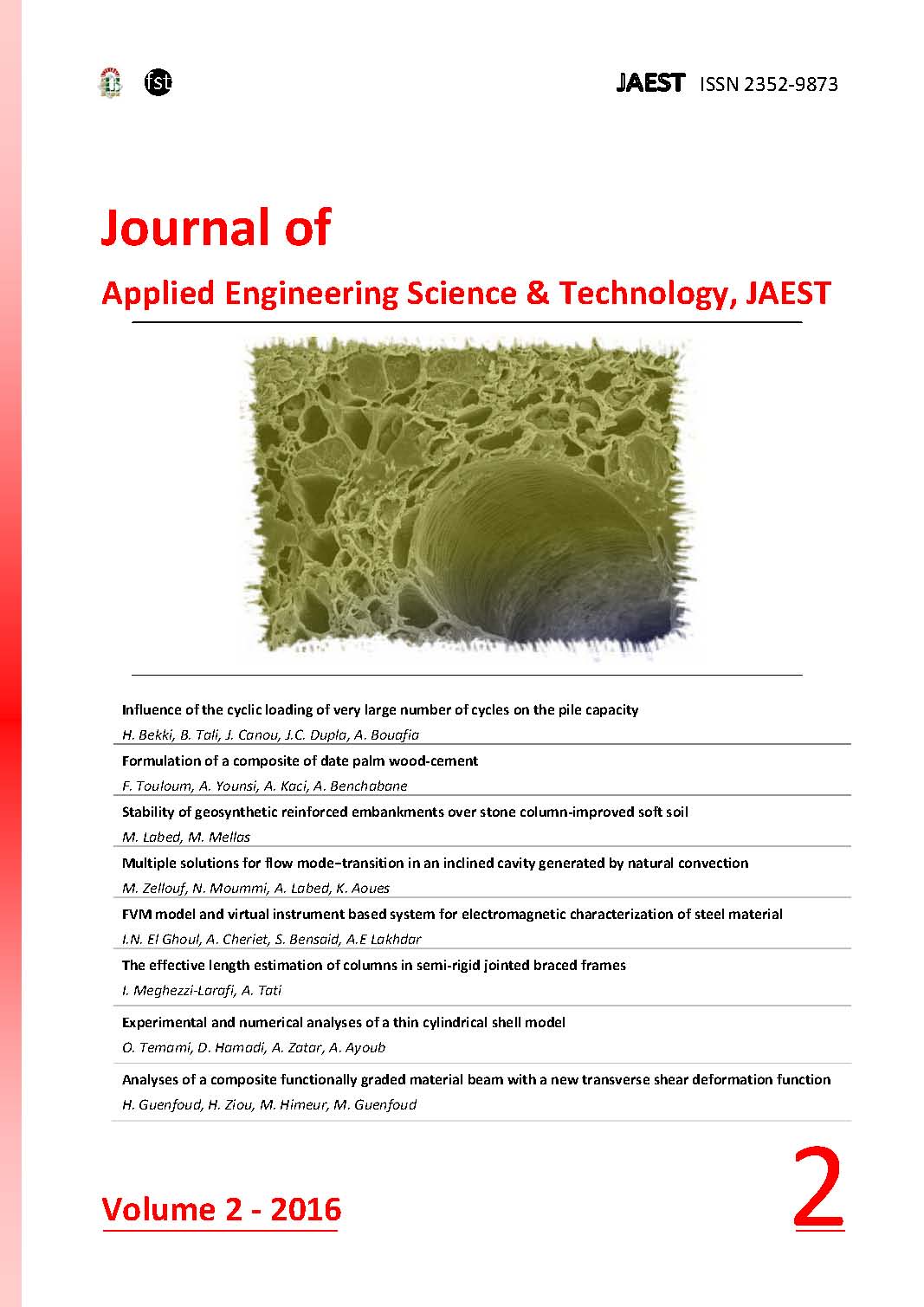The effective length estimation of columns in semi-rigid jointed braced frames
DOI:
https://doi.org/10.69717/jaest.v2.i2.42Keywords:
Effective length factor, Semi-rigid connection, Braced frame, Relative stiffness coefficientAbstract
This paper presents a theoretical and exact procedure for the stability analysis of braced
steel frames, taking in account the flexibility effect of the beam-column connections. In order to
determine the effective length factor (K-factor). The isolated subassembly approach is used to
establish the buckling governing equation. In this study, the relative stiffness coefficient at the
isolated column ends is provided by the remainder members of the structure, rather than of the
relative stiffness factor in the alignment chart method. A computer program for plane structure
analysis is used to evaluate the relative stiffness coefficients. To illustrate the accuracy of the
established transcendental equation, K-factor values for the case of fully rigid connections, are
compared to the exact and the French rules results. The effect of the type of transfer elements
between the frame members, in term of fixity factors is investigated. Moreover, the effect of
restraining conditions, provided by the whole frame structure, in term of relative stiffness
coefficients, is also studied. The obtained results revealed that the buckling critical loads of the
columns in frames of rigid members are significantly affected by the fixity factors variation, unlike
in flexible structures.
Downloads
Downloads
Published
Issue
Section
License

This work is licensed under a Creative Commons Attribution-NonCommercial 4.0 International License.













